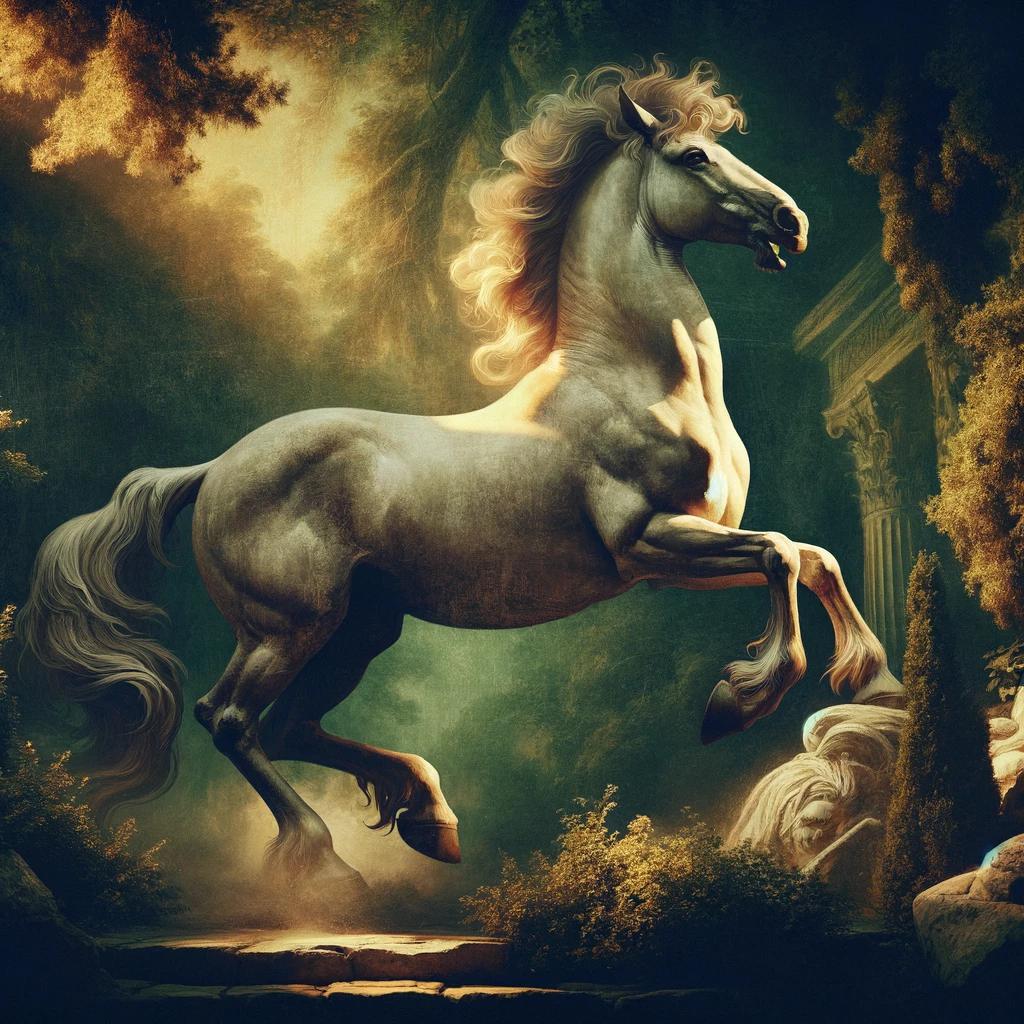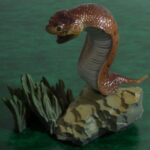Introduction
In the rich tapestry of Philippine folklore, the Tikbalang stands out as one of the most intriguing and enduring figures. Often depicted as a tall, bony humanoid creature with the head and hooves of a horse, the Tikbalang captures the imagination with its otherworldly appearance and mythical allure.

The Tikbalang is deeply rooted in the cultural narratives of the Philippines, its origins tracing back to pre-colonial times. As is common with many mythological beings, the Tikbalang serves as a cultural symbol and a moral compass, its tales often imparting lessons about respect for the natural world and the consequences of straying from societal norms.
Existing at the intersection of the human, the animal, and the supernatural, the Tikbalang embodies the complexity and richness of Philippine folklore. Its stories offer insights into the nation’s spiritual beliefs, societal values, and perceptions of the natural world, reflecting the multifaceted nature of Philippine culture.
This article embarks on a journey to explore the fascinating world of the Tikbalang, delving into its physical characteristics, its role in mythology, its modern-day sightings, and its representations in contemporary culture. Join us as we navigate the intriguing folklore surrounding the Tikbalang and discover the enduring significance of this mythical creature in the Philippines and beyond.
Physical Description of the Tikbalang
The Tikbalang is often described as an imposing figure, standing taller than a human with a physique that marries the features of a horse and a man. This hybrid creature is typically depicted with the head and hooves of a horse, yet it possesses the body of a human, creating a unique and somewhat eerie silhouette. Its body is said to be slender yet muscular, its limbs disproportionately long, and its skin covered in coarse, shaggy hair.

Its facial features are distinctly equine, with large, expressive eyes and a broad snout. Some tales even grant the Tikbalang with a set of sharp, elongated teeth, adding a sinister touch to its appearance.
The Tikbalang, with its unique blend of human and equine features, stands as a fascinating figure within Philippine folklore. Its distinctive appearance not only fuels the mystique surrounding it but also symbolizes the interplay between the human world and the natural realm, a recurring theme in many cultural narratives.
The Tikbalang in Folklore and Myth
In the realm of Philippine folklore, the Tikbalang occupies a prominent place, its mythical presence woven into a multitude of legends and stories. Often cast as a trickster or a shape-shifter, the Tikbalang is known to possess an array of supernatural abilities that lend an air of mystery and unpredictability to its character.
In many tales, the Tikbalang is portrayed as a guardian of the mountains and forests. It is said to have the ability to confuse travelers and lead them astray, causing them to lose their way. Some stories suggest that to escape the influence of the Tikbalang, a traveler must wear their shirt inside out, a testament to the creature’s mischievous nature.
The Tikbalang is also often associated with the element of wind, believed to be capable of manipulating it to create sudden gusts and storms. This ability further solidifies its image as a force of nature, a bridge between the human world and the elemental forces that shape the environment.
Furthermore, the Tikbalang is sometimes portrayed as a shape-shifter, able to assume a human form and blend in with society. This ability is often used in tales where the Tikbalang interacts with humans, sometimes leading to marriages and the birth of half-human, half-Tikbalang offspring.
Despite its intimidating appearance and supernatural abilities, the Tikbalang is not always depicted as a malevolent creature. In some stories, it can be appeased or even befriended, often in exchange for respect, offerings, or services. These tales underscore the complex nature of the Tikbalang, a creature that embodies the unpredictability of the wild, the allure of the supernatural, and the nuanced relationship between humans and the natural world.

Comparative Mythology
Creatures similar to the Tikbalang appear in the folklore and mythology of other cultures, each with their unique characteristics. One of the most notable is the Centaurs from Greek mythology. Like the Tikbalang, Centaurs are depicted as half-human, half-horse beings. However, Centaurs have the lower body of a horse and the upper body of a human, a distinction from the largely humanoid form of the Tikbalang with its horse-like head and feet.

Another similar entity is the Nuckelavee from Scottish folklore, a creature with a human torso attached to a horse’s back. However, the Nuckelavee is often portrayed as a more malevolent entity, associated with disease and decay, whereas the Tikbalang’s nature can range from mischievous to outright malicious, depending on the story.
The existence of these analogous creatures across different cultures underscores the universal human tendency to anthropomorphize and mythologize the natural world. It also highlights how different societies can interpret similar concepts — in this case, the fusion of human and horse — in ways that reflect their unique cultural and environmental contexts.
Conclusion
From its origins in pre-colonial mythology to its continued presence in contemporary culture, the Tikbalang remains an enduring figure in the cultural landscape of the Philippines. This mythical creature, with its horse-like head, humanoid body, and array of supernatural abilities, has captivated generations with its intriguing blend of the familiar and the fantastical.
The Tikbalang’s role in folklore and mythology extends beyond that of a simple creature of legend. It serves as a symbol, a moral compass, and a conduit for exploring the relationship between humans and the natural world. Its tales impart lessons about respect for nature, the consequences of straying from societal norms, and the constant interplay between the known and the unknown.
Comparisons with similar creatures in other cultures’ folklore, such as the Centaurs of Greek mythology and the Nuckelavee of Scottish folklore, highlight the universality of certain themes in human storytelling. These comparisons underscore the shared human tendency to anthropomorphize and mythologize the natural world.
In contemporary culture, the Tikbalang continues to find relevance. Its image and legend have been adapted into various forms of media, from literature and film to video games. These representations not only keep the legend of the Tikbalang alive but also introduce it to a broader, global audience.
In conclusion, the Tikbalang stands as a testament to the enduring power and allure of folklore. It serves as a bridge between the past and the present, between the human world and the natural realm, and between the Philippines and the world beyond. The Tikbalang, in its various incarnations, continues to shape narratives, inspire creativity, and stimulate cultural discussions, solidifying its place as an enduring figure in Philippine folklore and beyond.






